The dalmatic is a liturgical garment used in the Catholic Church, especially during the solemn celebrations of Holy Week.
The dalmatic tunic is a wide garment with broad sleeves. Deacons are the primary wearers, though priests and bishops can wear it on special occasions.
Dalmatic vestments are often adorned with religious motifs, such as crosses, wheat stalks, chalices, etc. This liturgical ornament, like chasubles, is available in different colors according to the liturgical calendar.
In Catholic tradition, the dalmatic symbolizes dignity and service to God and the community. Its use represents a vocation of service and the spiritual union between the deacon or priest who wears it and Christ.
The dalmatic is primarily used by:
The colors of the dalmatic vary according to the liturgical season and carry spiritual and symbolic significance:
During Holy Week, the colors of dalmatics are adapted to each liturgical celebration:
The dalmatic is a liturgical vestment worn over the alb, covering the deacon's or subdeacon's body at the front and back, with wide, open sleeves. It is used in ordinations and other ceremonies by a cardinal or bishop.

Ref: 52F3586
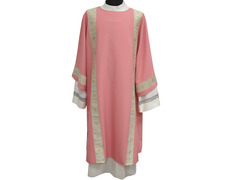
Ref: 52F3586
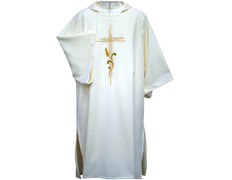
Ref: 52F3584
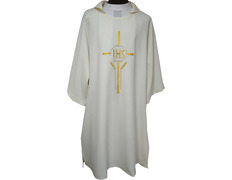
Ref: 52F3575
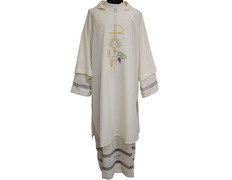
Ref: 52F3510
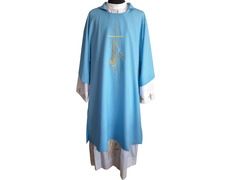
Ref: 52F3529
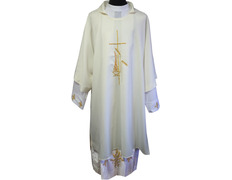
Ref: 52F3529

Ref: 52F3531
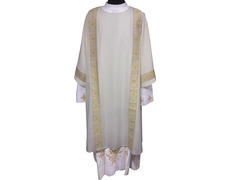
Ref: 52F3586
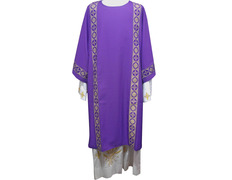
Ref: 52F3586

Ref: 52F3586

Ref: 52F3586

Ref: 52F3510

Ref: 52F3510

Ref: 52F3510

Ref: 52F3575

Ref: 52F3575

Ref: 52F3575

Ref: 52F3584

Ref: 52F3584

Ref: 52F3529

Ref: 52F3529

Ref: 52F3529

Ref: 52F3531

Ref: 52F3531

Ref: 52F3531
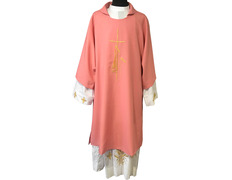
Ref: 52F3529

Ref: 52F3584